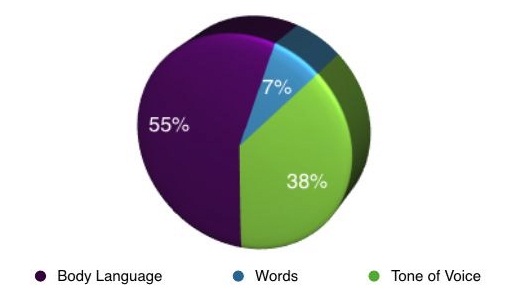To be an effective coach or trainer it is necessary to be skilled at working with the body, yet most training and coaching is a purely cognitive affair, says Mark Walsh.
What body?
To understand why the body has been largely ignored by trainers and coaches it is necessary to understand Western cultural history – but this is beyond the scope of this article. Enough to say that the disembodied West coming first from the repressed Dark Ages and later the reductionist Industrial Revolution is now starting to wake-up to the body again. It is also struck anew by a modern technological obsession (see my article on e-learning). It is against this backdrop that many training providers and coaches ignore the body as something scary that they know little about, see education as a purely heady exercise in learning about things and the body as merely concerning survival and reproduction.
Why the body is important to coaches and trainers

|
Embodied-Self-Awareness
· Body awareness (with attention)
· Awareness of attention
· Postural and movement (includes breath) awareness
· Mood and emotion awareness
· Sleep/rest/activity cycle awareness
· Felt Intuitive sense
|
Embodied Social Awareness
· Social body awareness (awareness of others – individuals and group moods)
· Social attentional awareness
· Somatic assessment (evaluating others by looking at their bodies)
· Group mood awareness
· Felt intuitive sense of others (via unconscious mirroring)
· Empathy
|
|
Embodied Self-Management
· Postural and attentional adjustment
· Breath control (e.g. diaphragmatic breathing)
· Mood management – e.g. confidence building
· Sleep/rest/activity cycle management (Excitation, centring, grounding, etc)
· Relaxing or enlivening
· Accessing intuition (e.g. focusing)
|
Embodied Social Management/ Connection
· Nonverbal mimicking, leading and rapport building
· Interruption of unconscious mirroring (e.g. during vicious conflict cycles)
· Empathic and emotional connection
· Leadership impact (charisma, presence, gravitas)
· Trust building – sincerity
|
Embodied tips for coaches and trainers
Working with the body is not simple something that can be tagged onto what trainers already know. It takes some years of a regular body practice (e.g. yoga or a martial art) to get back into the body and specialist training is often required. That being said there are some things any coach or trainer can do to bring the body back into their work at least to some degree immediately.
- Notice your own body while coaching or training – just doing this will add a new dimension to your work
- Pay attention to participants/clients physicality – how they stand, sit and hold themselves- again just this will make a huge difference
- Get a body awareness practice yourself – yoga, tai chi and martial arts are fantastic, though any physical activity done with attention is fine
- Learn to manage yourself under pressure by practicing the ABC “centring” process:
- Make your communication as embodied as possible with clients – face-to-face is better than Skype is better than phone is better than email, is a good order to consider.
- Learn to access and trust your gut instinct
- Get feedback on what mood your body conveys (we are all blind to this so you may be surprised!)
Embodied training and coaching resources
For those wishing to take this further I would recommend world leaders The Strozzi Institute, Paul Linden, Wendy Palmer and Arawana Hayashi in the US. In the UK, we, Integration Training, along with Roffey Park and The Beyond Partnership specialise in this type of training. In Europe The Newfield Network provides excellent coach training with an embodied element. Books by Richard Strozzi Heckler and Paul Linden are also excellent resources and I would like to honour these two mentors as the source of much of what I have discussed here.
To be an effective coach or trainer it is necessary to be skilled at working with the body, yet most training and coaching is a purely cognitive affair, says Mark Walsh.
What body?
To understand why the body has been largely ignored by trainers and coaches it is necessary to understand Western cultural history – but this is beyond the scope of this article. Enough to say that the disembodied West coming first from the repressed Dark Ages and later the reductionist Industrial Revolution is now starting to wake-up to the body again. It is also struck anew by a modern technological obsession (see my article on e-learning). It is against this backdrop that many training providers and coaches ignore the body as something scary that they know little about, see education as a purely heady exercise in learning about things and the body as merely concerning survival and reproduction.
Why the body is important to coaches and trainers

Embodied-Self-Awareness · Body awareness (with attention) · Awareness of attention · Postural and movement (includes breath) awareness · Mood and emotion awareness · Sleep/rest/activity cycle awareness · Felt Intuitive sense | Embodied Social Awareness · Social body awareness (awareness of others – individuals and group moods) · Social attentional awareness · Somatic assessment (evaluating others by looking at their bodies) · Group mood awareness · Felt intuitive sense of others (via unconscious mirroring) · Empathy |
Embodied Self-Management · Postural and attentional adjustment · Breath control (e.g. diaphragmatic breathing) · Mood management – e.g. confidence building · Sleep/rest/activity cycle management (Excitation, centring, grounding, etc) · Relaxing or enlivening · Accessing intuition (e.g. focusing) | Embodied Social Management/ Connection · Nonverbal mimicking, leading and rapport building · Interruption of unconscious mirroring (e.g. during vicious conflict cycles) · Empathic and emotional connection · Leadership impact (charisma, presence, gravitas) · Trust building - sincerity |
Embodied tips for coaches and trainers
Working with the body is not simple something that can be tagged onto what trainers already know. It takes some years of a regular body practice (e.g. yoga or a martial art) to get back into the body and specialist training is often required. That being said there are some things any coach or trainer can do to bring the body back into their work at least to some degree immediately.
- Notice your own body while coaching or training – just doing this will add a new dimension to your work
- Pay attention to participants/clients physicality - how they stand, sit and hold themselves- again just this will make a huge difference
- Get a body awareness practice yourself – yoga, tai chi and martial arts are fantastic, though any physical activity done with attention is fine
- Learn to manage yourself under pressure by practicing the ABC “centring” process:
- Make your communication as embodied as possible with clients – face-to-face is better than Skype is better than phone is better than email, is a good order to consider.
- Learn to access and trust your gut instinct
- Get feedback on what mood your body conveys (we are all blind to this so you may be surprised!)
Embodied training and coaching resources
For those wishing to take this further I would recommend world leaders The Strozzi Institute, Paul Linden, Wendy Palmer and Arawana Hayashi in the US. In the UK, we, Integration Training, along with Roffey Park and The Beyond Partnership specialise in this type of training. In Europe The Newfield Network provides excellent coach training with an embodied element. Books by Richard Strozzi Heckler and Paul Linden are also excellent resources and I would like to honour these two mentors as the source of much of what I have discussed here.




